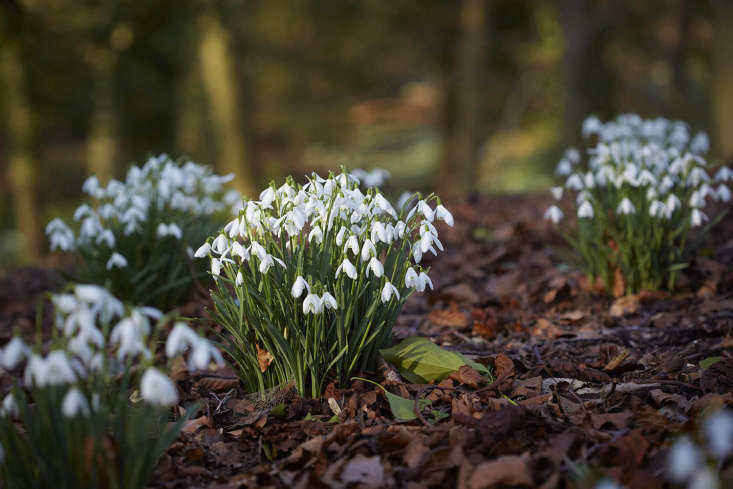Need some good news? Spring hasn’t been canceled. Gardening is still allowed. And you can get as close to your flower friends as you want to. So when you find a dry, warmish day, grab your cleaned and sharpened garden tools (see: How to Care for Your Garden Pruners), and head outdoors with our April to-do list.
Featured photograph by Michelle Slatalla, from Steal This Look: My Mini Garden Shed in a Garage.
Clean Up Winter Remnants

In my garden, tons of dried liquid amber leaves, sticks, and random duff still litter my garden beds. My first task will be to clean this away so any tiny seedlings can safely sprout and to remove any hiding spots for pesky slugs and snails. If your garden has any leftover leaves and debris, now is the time to clear it away. Also, finally prune down any dry perennial stalks that were left through winter so fresh growth can emerge.
Go On Pest Patrol

Aphids, snails, and slugs are hiding and hibernating in the crowns of plants and under leaves but are slowly rearing their hungry heads to come enjoy (read: wreak havoc) on your garden. The natural approach is not to use nasty insecticides that can harm helpful bugs but instead wait until night and go on a bad-bug scavenger hunt. Gather the kids, a flashlight, a bucket, and go in search for these hiding nocturnal buggers. Also, consider adding plants that attract beneficial insects who will do some of the pest removal for you. Good candidates: marigolds, yarrow, dill, and and cosmos.
Tackle Weeds

Nothing like moisture and the sun to wake up weeds. Before these spreaders go to seed, diligently remove them by either pulling them out (root and all), pouring vinegar on them, or using the weed whacker. Never use toxic chemical weed sprays like Roundup; instead, weed early, weed often, use mulch, or crowd out weeds with ground covers or other spreading plants.
Supercharge Your Soil

Remember that your soil needs nutrients, too, so now is time to add copious amounts of well rotted manure or organic compost. This critical step improves soil structure, feeds the essential microbial organisms in the soil and encourages beneficial insect activity. (See Dirty Secrets: 9 Ways to Improve Garden Soil.)
Sow Seeds of Love

Once the danger of frost has passed, transplant any seeds you may have started indoors and sow seeds outside for any others. Some flowers are quite easy to start by seed and will also save you money. Think of zinnias, coneflower, alyssum, and calendula. And if seeds aren’t your thing, of course you can buy nursery-grown starts. Good choices are spinach, carrots, radishes, and lettuce. Oh, and definitely don’t forget about planting herbs to enhance your cooking and berries for quick healthy snacks.
Take Care of Trees

Trees need love, too, so add organic mulch in a circle surrounding them, but not touching the trunks, to give the tree nutrients and help it conserve moisture. In addition, prune any dead or sickly branches to clean it up and stimulate new plant growth. This is also your last good chance to plant any new trees without subjecting them to hot summer weather.
For more on spring garden prep, see:
- Mulch: Monthly Garden Tip for March
- Your First Garden: What You Need to Know Before You Grow Plants from Seeds
- Your First Garden: How to Start a Garden for Practically Free












Have a Question or Comment About This Post?
Join the conversation (0)